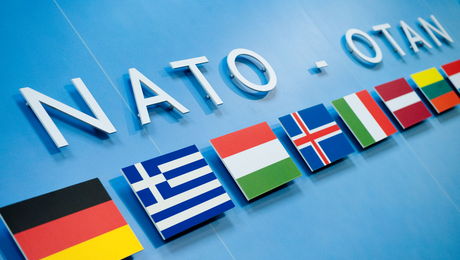NATO amplifies interest in biometrics
20 September, 2013
category: Biometrics, Government
Dutch Army commander Colonel Bernard Wulfse, has revealed that NATO is investing time, man power and resources into advancing the agency’s use of biometrics.
Wulfse, who also works with the Joint Task Force Counter Improvised Explosive Device (C-IED), explained NATO’s increased biometric efforts at the Biometric Consortium Conference held this week in Tampa, Fla., stating that the alliance has named biometrics a “critical capability shortfall to address.”
At the center of the agency’s biometric goals will be bringing all partnering nations together – not just the few currently supporting biometrics efforts. Prior methods that have proved useful against IEDs already maintain applications within the realm of biometrics, and Wulfse explains that lessons can be applied from the former to the latter.
“Current conflicts generate from within states, not between them, so identifying enemies is difficult. More investment in rooting out the bad guys is necessary,” explains Wulfse. “This anonymity in the physical and cyber realms makes it impossible for traditional forces to deploy their best capabilities, asymmetric threats have rendered our strengths ineffective.”
This is where biometrics comes into play. Identity management – that which can determine friend from foe – can help to alleviate these asymmetric threats beyond just the military context. Other applications for biometrics that Wulfse believes can provide value include C-IED, counterintelligence, counterterrorism, access control and others.
Also important for NATO’s increased biometric effort is a renewed support of the technology from the highest headquarters, a support that Wulfse says has not always been present. The potential of biometrics for military use, however, is yet to be fully understood.
At present, NATO lacks symmetry in its guidance, procedures and standards, and biometric competencies among the various armed forces remain lopsided. A general lack of knowledge and trust in biometric technology, along with the fact that it often takes years for biometric data to become a usable resource means that soldiers collecting data today will likely never see the fruits of their labor.
Nonetheless, NATO’s vision is to implement interoperable biometrics capabilities throughout its membership and ranks. Despite the doubters, the organization is increasing biometrics staff and expertise at its headquarters, along the way creating the NATO Biometrics Work Program.
Included in the agency’s Biometrics Work Program are doctrine, legal framework, principle sharing, people and organization, equipment, education and training. For Wulfse, the key concern will be the people and organization facet of the program. Wulfse believes that despite efforts to increase human resources, NATO needs yet more personnel in the field of biometrics, but with budget concerns abound, now is not a good time to ask countries to supply these personnel needs.
Wulfse is well aware, however, that if NATO is to expand its biometrics initiative and build upon past developments, it simply has to employ the right people. To better distribute pertinent information, the agency is developing a biometrics handbook that explores how to incorporate the topic into more courses and training.
Whatever the solution, Wulfse stresses that communication and cooperation with other agencies will be vital if NATO is to develop a solution that is good for the rule of law and military operations alike.
For more on NATO’s biometric interests, see the Armed Forces Communications and Electronics Association (AFCEA) article here.



